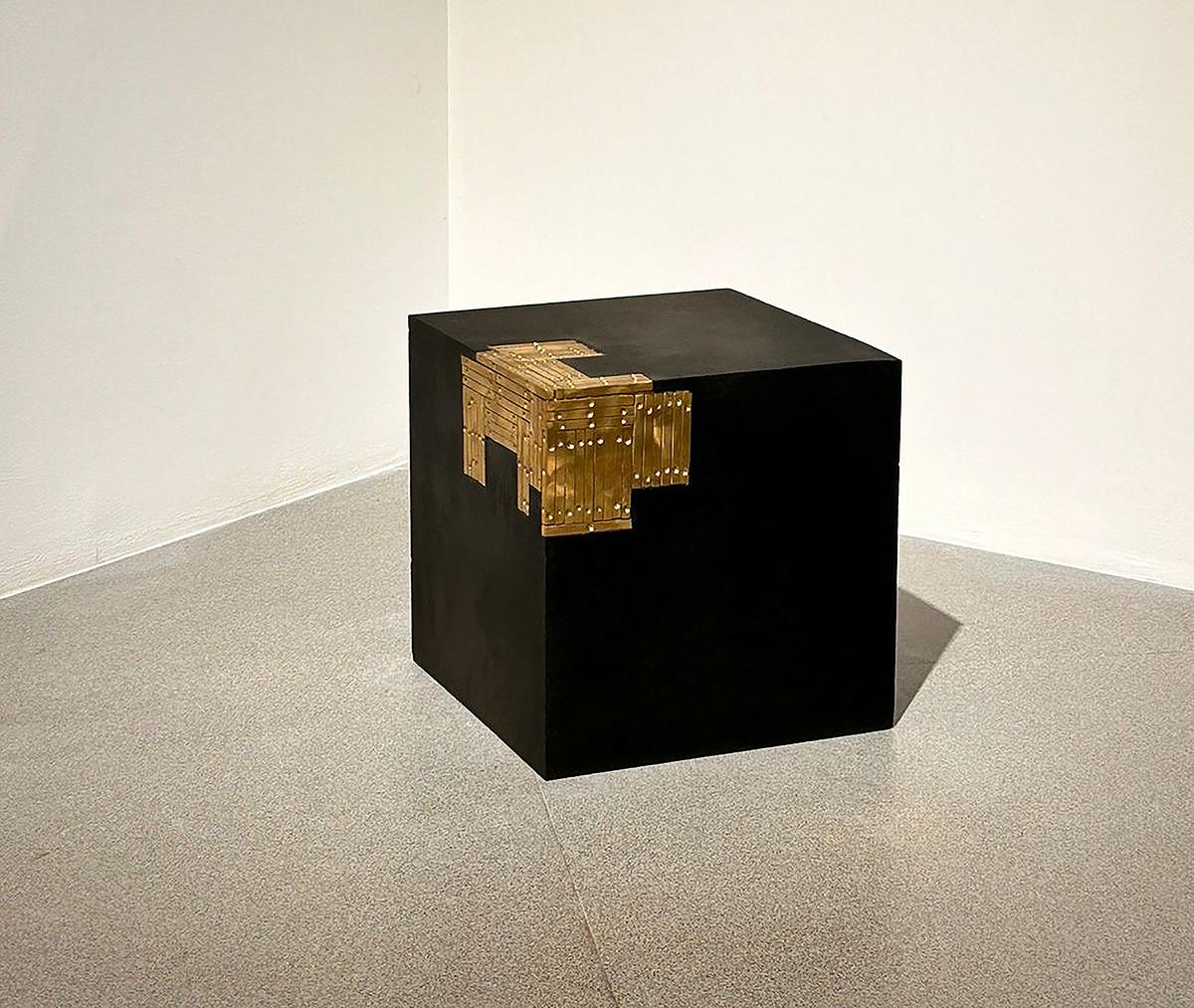Arvind Sundar’s latest body of work, COSMOS, exhibited at Anupa Mehta Contemporary Art in Colaba, might seem like an intricate dance of shapes and forms. But beneath the geometric exteriors lies a deep philosophical inquiry into infinity, mythology, and the unpredictability of life itself. COSMOS, running from September 12 to October 11, marks a significant departure for Arvind as he moves from painting to three-dimensional forms influenced by the landscape and mythology of Hampi. This shift is rooted not just in artistic evolution but in a fundamental exploration of what it means to seek harmony in a chaotic world.
For Arvind, this journey into geometry and myth began long before he formalized his artistic practice. “My grandfather was a malaria inspector,” he recalls. “He sketched everything — mosquito larvae, houses, everything — because they didn’t have cameras then. He retired, but he would sit with me and draw. That was my first encounter with drawing.” This early foundation in art took on mathematical precision through his other childhood passion: origami. “Origami is purely mathematical. You can fold paper two ways, but the combinations are infinite.”
It is this fascination with infinite possibilities that finds expression in COSMOS. The pieces on display combine precise mathematical systems with mythological references, and Arvind’s recent stint at Hampi Art Lab plays a central role in shaping this collection. “Hampi is where you see infinity in every direction,” he says. “The rocks, the horizon — they’re infinite. The landscape, combined with the mythology of the place, led me to think more about the universe and its endlessness.”
Nature of Landscapes by Arvind Sundar
| Photo Credit:
Special Arrangement
Hampi, of course, is not just a landscape but a site of ancient ruins, temples, and mythological significance. “Many scenes from the Ramayana are said to have taken place there,” he says. This blending of the mythic and the geometric is apparent in his piece, Nature of Landscapes. In this installation, Arvind places a rock sourced from Hampi alongside tiles shaped like the Einstein Shape, a form that can tile a plane infinitely without repeating a pattern. “The Svayambu Linga at the Virupaksha Temple is a naturally formed idol, and I was fascinated by how humans built around that rock,” he explains, “It’s this interplay between discovery, belief, and infinity that I wanted to capture.”
While geometry provides structure, unpredictability plays a key role in Arvind’s work as well, perhaps most notably in Kattam, a piece inspired by the traditional South Indian game of dice, Dayakattai. “At the Virupaksha Temple, I saw grids on the floor where people used to play dice,” he says. “It struck me as a place of certainty, of belief, but there they were, playing a game of chance. Even in a space associated with order, unpredictability is a part of life.” This idea resonates throughout COSMOS, where chance and symmetry coexist, echoing both mythological stories and modern scientific concepts.
Arvind’s time studying Renaissance masters in Italy further honed his interest in mathematics and art. He recalls being struck by how artists like Leonardo da Vinci and Michelangelo used mathematical principles like the Golden Ratio in their work. “The pursuit of perfection is inherently mathematical,” he says, “Before my time in Italy, my work was geometrical but not necessarily mathematical. That experience pushed me to explore these ideas further.”

Kattam by Arvind Sundar
| Photo Credit:
Special Arrangement
Yet Arvind is careful to note that understanding the mathematical underpinnings of his work is not essential for the viewer to appreciate it. “The Great Pyramid was built with advanced mathematics, but people appreciate its beauty without knowing the math,” he says. “Similarly, the beauty of my work can stand on its own. Math is everywhere, but it doesn’t need to be obvious.”
The title of the exhibition, COSMOS, reflects Sundar’s overarching theme: the quest to understand the universe and our place within it. Infinity has always fascinated humans, whether through religion, mythology, or science. This show, it seems, is Arvind’s way of contributing to that ongoing quest. For him, the unpredictability inherent in the universe is perhaps the most profound lesson of all. As he reflects on his exhibition, he references a line from Stephen Hawking: “God does play dice with the universe.”
COSMOS is on till October 11 at Anupa Mehta Contemporary Art, Mumbai. For more information, contact info@anupamehtaarts.com
Published – October 07, 2024 12:20 pm IST